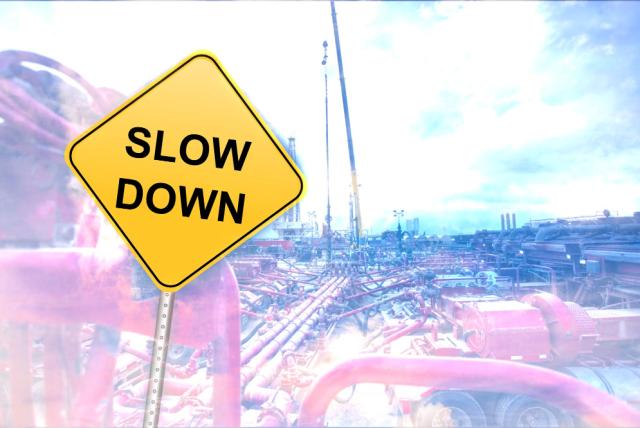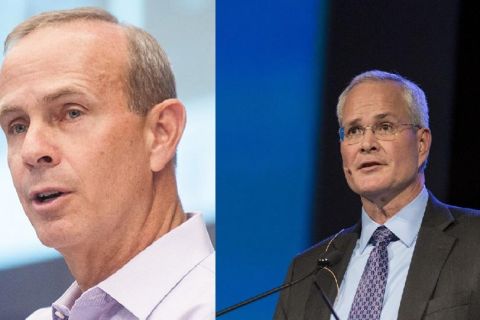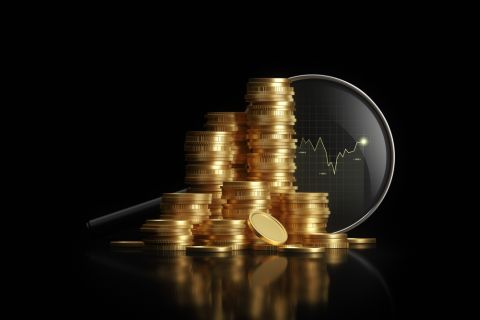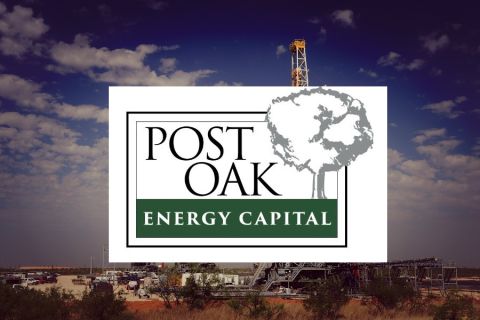
True, fomenting the revolution, whether political or shale, is exhilarating and daring and frightful. Keeping what you have won afterward is a different skill entirely, wrote Leslie Haines in her monthly column for Oil and Gas Investor. (Source: Hart Energy/Shutterstock.com)
[Editor's note: A version of this story appears in the December 2019 edition of Oil and Gas Investor. Subscribe to the magazine here.]
The industry will be slowing down in 2020, that’s plain to see. It’s probably a good thing, although not an exciting situation that will generate splashy headlines; it may not get investors’ hearts to beat faster and open their wallets yet either. Third-quarter conference calls indicated prudence reigns among the E&Ps, and most people would say thank you and amen to that.
In most basins, the above-ground constraints of pipeline and gathering bottlenecks are coming to an end this year, so the E&P companies will have to rein in spending by their budget decisions as they plot their 2020 strategy, instead of due to bottlenecks. The go-go years of the early shale days have given way to a slo-mo pace: Keep production flat, or at the least, keep growth subdued and within cash flow.
That’s happening.
A Seaport Global Securities report on the third quarter said it is using $50 per barrel (bbl) as the long-term price (down from $55/bbl previously). “Spoiler alert: NAVs are dropping like they’re hot—but it’s needed. Investors are clearly viewing these companies with a more critical eye today than they did in years past.”
Bob Brackett, analyst at Bernstein Research, advised in a note back in March 2018 that U.S. shale growth players should “discipline your kids now, or the world will do it for you later.” Any parent of a preteen will relate to that one.
Brackett’s warning has come to pass. The banking and investment world has certainly imposed discipline, and it’s been painful. No one likes to be grounded. When a well-regarded executive with a great track record, exhibited by more than a $1 billion-plus exit and restart, cannot get his old bank to give him an RBL, you know the world has changed. Even private-equity-backed companies now speak about paying dividends to their investors while extending the exit timeline.
One CEO remarked to us that every time he raises his head above the foxhole, he gets shot at, so he is lying low and just trying to control whatever he can, such as G&A and other spending line items.
Can we look to executives who have seen it all and endured through all the cycles, and done so successfully? Yes. We like the motto of Midland-based Henry Resources Inc. chairman Jim Henry, who says, “I would rather be around than rich.”
That reminds us of the old oilfield saying, “Do what you can to make sure your name is still listed in the phone book.”
Henry Resources has never operated by debt-fueled activity. It has always worked within cash flow. At our recent Executive Oil Conference in Midland, Henry Resources president David Bledsoe explained the private company’s philosophy. The care for employees and the community was evident. The production growth rate is done at a cash-flow-neutral pace. Any increase in net wells drilled must be proportional to company revenues generated. Learnings from science wells concerning well spacing and completions are examined and applied to the next few wells, then rinse and repeat.
That’s worked out pretty well—Henry and his wife have donated some $30 million to Midland charities over the years. And in November, the company celebrated 50 years in business.
When Ben Franklin exited the Constitutional Convention at Independence Hall in 1787, someone asked him what kind of government the representatives had created. “A republic, if you can keep it,” he replied. That’s turned out to be a big if that has required constant, dedicated work.
True, fomenting the revolution, whether political or shale, is exhilarating and daring and frightful. Keeping what you have won afterward is a different skill entirely. It’s like the genius at political debates and stump speeches, and full of charisma, who can win an election handily but then gets bogged down in the daily business of governing.
Lately, we have seen a few rare hints of better things to come, although it may be more the outgrowth of wishful thinking. For example, here’s Tudor, Pickering, Holt & Co. in November: “Dare we say it? Our two-day trip to the West Coast felt almost optimistic, as the collapse in available liquidity for many upstream companies may finally draw to an end a decade-plus of uneconomic growth (that has been fueled by a seemingly endless pool of capital readily provided by the markets).
“Ultimately, this should lead to slower U.S. growth for both oil and gas and, in our view, an acceleration of M&A over the next 12 months. While 2020 macro-dynamics remain challenging, given non-OPEC supply ramp for oil and current imbalances on gas, clients in this market are starting to look through next year and thinking about the upside potential in 2021-plus. [Italics are mine.] Names most often discussed included CVX, COP, EOG, CXO and COG.”
At this point, any whiff of optimism would seem like a breath of fresh air.
Recommended Reading
Exxon, Chevron Tapping Permian for Output Growth in ‘24
2024-02-02 - Exxon Mobil and Chevron plan to tap West Texas and New Mexico for oil and gas production growth in 2024, the U.S. majors reported in their latest earnings.
CEO: Coterra ‘Deeply Curious’ on M&A Amid E&P Consolidation Wave
2024-02-26 - Coterra Energy has yet to get in on the large-scale M&A wave sweeping across the Lower 48—but CEO Tom Jorden said Coterra is keeping an eye on acquisition opportunities.
E&P Earnings Season Proves Up Stronger Efficiencies, Profits
2024-04-04 - The 2024 outlook for E&Ps largely surprises to the upside with conservative budgets and steady volumes.
Private Equity: Seeking ‘Scottie Pippen’ Plays, If Not Another Michael Jordan
2024-01-25 - The Permian’s Tier 1 acreage opportunities for startup E&Ps are dwindling. Investors are beginning to look elsewhere.
Permian E&P Midway Energy Partners Secures Backing from Post Oak
2024-02-09 - Midway Energy Partners will look to acquire and exploit opportunities in the Permian Basin with backing from Post Oak Energy Capital.





